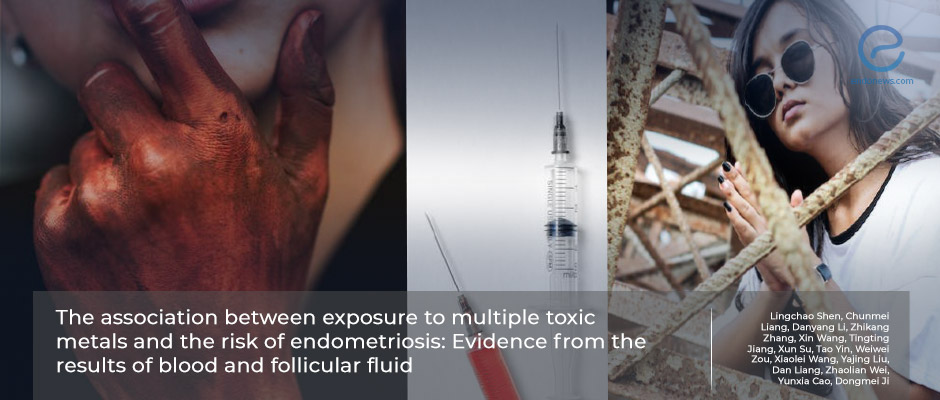Hazardous substances in pollution and relationship with endometriosis.
Vallée and colleguages. from the Department of Epidemiology and Public Health of Foch Hospital, France, recently published a narrative review about environmental pollution and its association with endometriosis in BJOG. They used the existing English literature to discuss the association…
Key Points Lay SummaryIron and toxic environmental elements in ovarian endometriomas
It is well-known that the growth of endometriotic lesions is estrogen-dependent and supported by inflammatory processes. In addition to oxidative stress, it is believed that several other factors, including chemicals and environmental factors, and genetic predisposition may play a potential…
Key Points Lay SummaryExposure to toxic metals and the risk of endometriosis
Mercury, lead, and cadmium are the best-studied heavy metals for several adverse effects on the human reproductive system. Mercury can induce DNA damage, oxidative stress, and mitochondrial dysfunction, and lead exposure is associated with menstrual disorders, preterm birth, and miscarriage.…
Key Points Lay SummaryEnvorinmental metals harmful for female reproductivity
Heavy metals exposure in a wide range of ways is one of the main causes of increased infertility. According to the 2003 National Health Survey, nearly every pregnant woman in the USA is exposed to at least 43 hazardous chemicals…
Key Points Lay SummaryEnvironmental to occupational exposure, and possible risk factors for endometriosis.
Many objects in daily use are made of plasticizing agents. Studies suggest that chronic exposure to these agents are toxic to reproductive organs and cause metabolic disorders. For example, diethyl phthalate is still in use in cosmetic products. Caporossi et…
Key Points Lay SummaryZinc and lead levels in blood are altered in endometriosis
Trace metals are metals usually present in small but measurable amounts in the body. They are needed by living organisms to function properly and when depleted, can be replenished through diet and environmental exposures. Some common trace metals include iron,…
Key Points Lay Summary
 By Selma Oransay
By Selma Oransay





 By Demet Candaş Green
By Demet Candaş Green